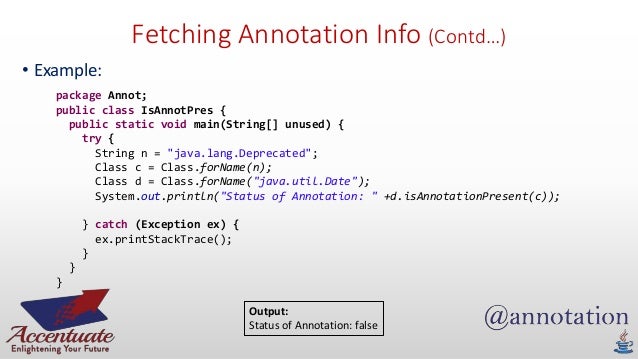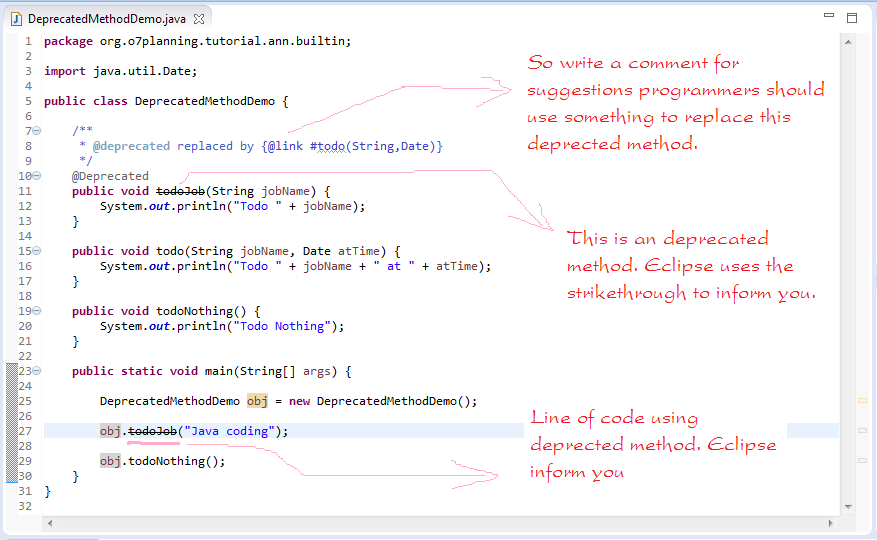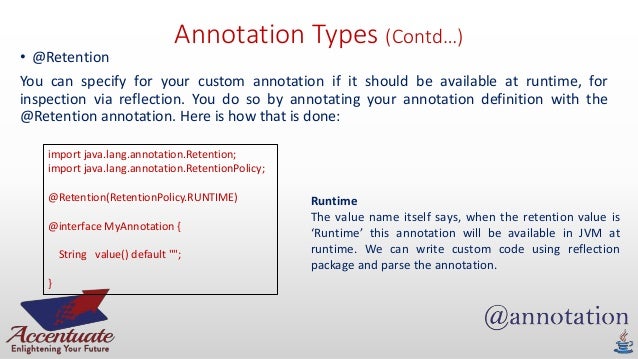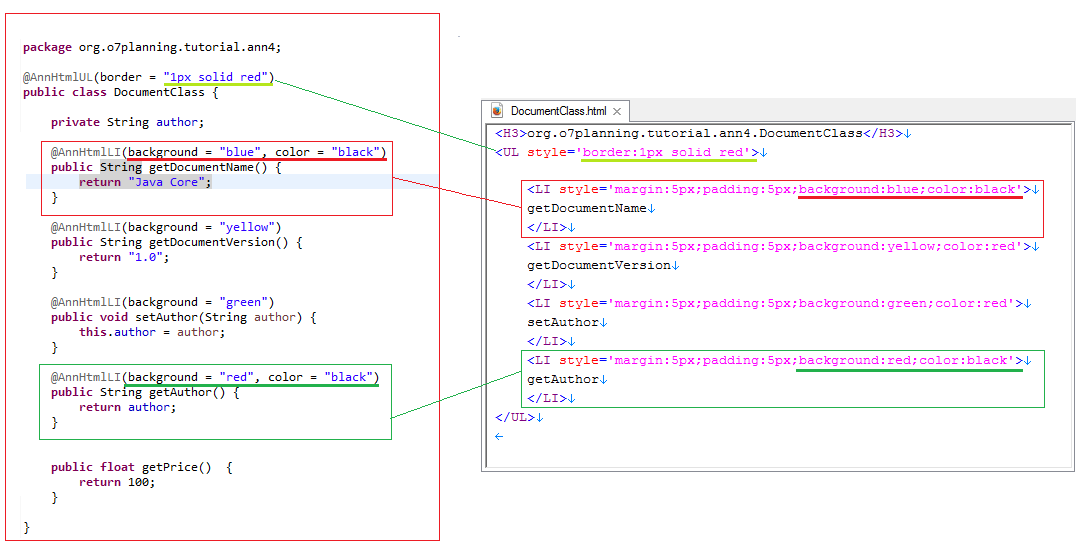
Related Articles
· The first step to creating a custom annotation is to declare it using the @interface keyword: public @interface GFG { } The next step is to specify the scope and the target of our custom annotation · Custom annotations help: Reduce the effort of writing code, by adding default behavior to methods Add custom behavior to classes and interfaces Save the effort of writing XML descriptors and marker Author: Utkarsh Jain · First you need to mark if annotation is for class, field or method. Let's say it is for method: so you write this in your annotation definition: @Target (blogger.com) @Retention (blogger.comE) public @interface DirtyCheck { String newValue (); String oldValue (); }Reviews: 3

How Are Annotations Created?
Java custom annotations are created by using @interface, followed by annotation name. An annotation can have elements which looks like methods. Annotation elements can have default values. For those elements values can be skipped while using annotation. Syntax: @ interface CustomAnnotationName {} Types of Custom Java Annotation Marker Annotation Java Custom annotations or Java User-defined annotations are easy to create and use. The @interface element is used to declare an annotation. For example: @interface MyAnnotation {} Here, MyAnnotation is the custom annotation name. Points to remember for java custom annotation signature · In this tutorial, we will show you how to create two custom annotations – @Test and @TestInfo, to simulate a simple unit test framework. P.S This unit test example is inspired by this official Java annotation article. 1. @Test Annotation. This @interface tells Java this is a custom annotation

Built-In Java Annotations
Tag: create custom annotation in java Annotations In Java java Core Java by devs February 1, June 2, Before the introduction of Annotations, we were extensively using XML for metadata. Using XML for metadata as configurations separates the configuration from the code · The first step to creating a custom annotation is to declare it using the @interface keyword: public @interface GFG { } The next step is to specify the scope and the target of our custom annotation · Method 2: Custom annotations; Focusing onto custom annotations for which in order to use your custom annotation, we simply need to call your annotation using your annotation Name preceded with @symbol and pass the value of the declared variables in an ordered manner to the variables that you have declared in the annotation. Example 1

Table of Contents
· In this tutorial, we will show you how to create two custom annotations – @Test and @TestInfo, to simulate a simple unit test framework. P.S This unit test example is inspired by this official Java annotation article. 1. @Test Annotation. This @interface tells Java this is a custom annotation · Method 2: Custom annotations; Focusing onto custom annotations for which in order to use your custom annotation, we simply need to call your annotation using your annotation Name preceded with @symbol and pass the value of the declared variables in an ordered manner to the variables that you have declared in the annotation. Example 1 Java custom annotations are created by using @interface, followed by annotation name. An annotation can have elements which looks like methods. Annotation elements can have default values. For those elements values can be skipped while using annotation. Syntax: @ interface CustomAnnotationName {} Types of Custom Java Annotation Marker Annotation

Built-In Java Annotations used in Java code
· In this tutorial, we will show you how to create two custom annotations – @Test and @TestInfo, to simulate a simple unit test framework. P.S This unit test example is inspired by this official Java annotation article. 1. @Test Annotation. This @interface tells Java this is a custom annotation · The first step to creating a custom annotation is to declare it using the @interface keyword: public @interface GFG { } The next step is to specify the scope and the target of our custom annotation Tag: create custom annotation in java Annotations In Java java Core Java by devs February 1, June 2, Before the introduction of Annotations, we were extensively using XML for metadata. Using XML for metadata as configurations separates the configuration from the code
No comments:
Post a Comment